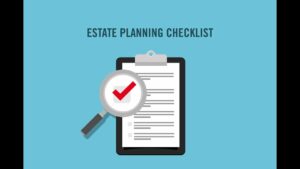Most people don’t consider anything about planning for incapacity or death to be joyful. However, if you consider estate planning documents as a way to share your wishes and make your departure easier for those you love, as well as a means to express your thoughts and feelings, it could make these tasks a little cheerier. A recent article from The Washington Post, “6 joyful steps for end-of-life planning,” could help reframe how you think of estate planning.
From a practical standpoint, death and incapacity are complicated for loved ones. They will appreciate your preparing an advance health directive, which should be created when a person is healthy, and not when they are in a hospital bed. The same goes for funeral arrangements, which are costly. There are so many choices and decisions to make—do your loved ones even know what you want? Leaving instructions and paying in advance will remove the burden for adult children trying to know what you wanted and dealing with the expense of paying for a funeral.
Digging through a loved one’s credit card bills, cellphone accounts, bank accounts and internet passwords is a big challenge in today’s digital world. It was far easier when there were stacks of paper for every account. Today’s executors need to have all of this information to avoid lost assets, avoid identity theft and prevent roadblocks to wrapping up your estate.
Here’s a checklist to help get your estate plan moving forward.
1 Create a crisis notebook. One binder with all estate planning documents will make it easier for loved ones. You should make additional copies but keep originals in one place—and tell your executor where the binder can be found. Create a worksheet of your many documents, so loved ones will know what they are looking for.
2 Have an advance directive created while you are having your estate plan made. This tells your loved ones what you want in case of incapacity and end-of-life decisions.
3 Have a will created with an experienced estate planning attorney. Without a will, the laws of your state determine how your property is distributed and who raises your minor children. Wills are state-specific, so a local estate planning attorney is your best resource. Be wary of online documents—if they are deemed invalid, it will be as if you didn’t have a will.
4 Make a digital estate plan. No doubt you have more than one email account, shopping accounts with more than a few retailers, credit cards, car leases or loans, home mortgage payments, social media, cloud storage, gaming accounts and more. Without a complete and comprehensive list of all accounts, your executor won’t know what needs to be closed, where your personal documents or photos live or how to retrieve them.
5 Plan your funeral. Yes, it is a little morbid, but do you want your loved ones to have to incur the cost and the emotional burden of planning, when you can do it for them? You’ll feel better knowing your wishes will be followed, whether it’s for a “green” funeral or a cremation, with a long period of mourning following your faith’s tradition or a short memorial service.
6 Write a letter of intent and any final farewells. This is an opportunity to share your thoughts with those you love, with healthcare providers and anyone else who matters to you, about healthcare decisions at end of life, or to convey your values, hopes and dreams for those you love.
When your wills, advance care directives, power of attorney, digital estate plan and funeral plans are all completed, you’ll be surprised at the sense of relief you feel.
Reference: The Washington Post (Jan. 5, 2023) “6 joyful steps for end-of-life planning”


